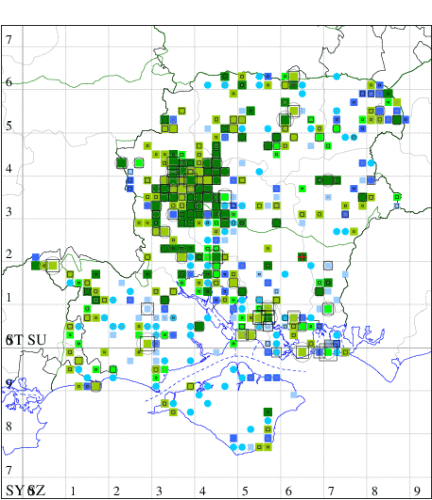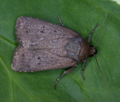Mouse Moth
Amphipyra tragopoginis
Checklist Number73.064 [B&F: 2299]
Verification
Record will be accepted (subject to date and location checks)
Classification
| Family: | Noctuidae |
| Subfamily: | Amphipyrinae |
| Genus: | Amphipyra |
| Species: | tragopoginis |
| Authority: | (Clerck, 1759) |
Common in a wide range of habitats, including gardens, woodland, sand-dunes, moorland and fens throughout the British Isles, more commonly recorded at sugar than at light and recent apparent declines may reflect this, a species of conservation concern under the UK Biodiversity Action Plan. Widespread and still moderately common in Hampshire and on the Isle of Wight. Wingspan 32-40 mm. There are usually three small dots on the forewing, and the moth is likened to a mouse in coloration and in the way it scampers into cover when exposed. Larva feeds on a wide range of herbaceous plants and shrubs, over-wintering as an egg.


The abundance in each month is indicated as follows:
 No records
No records Very occasional
Very occasional Irregular
Irregular Uncommon
Uncommon Off-peak, but not unusual
Off-peak, but not unusual Off-peak, but not unusual
Off-peak, but not unusual Main flight time
Main flight time| J | F | M | A | M | J | J | A | S | O | N | D | |
|---|---|---|---|---|---|---|---|---|---|---|---|---|
| Adult |  |  |  |  |  |  |  |  |  |  |  |  |
| Larval |  |  |  |  |  |  |  |  |  |  |  |  |
()(IMG_5882).jpg)

()(IMG_5882).jpg)